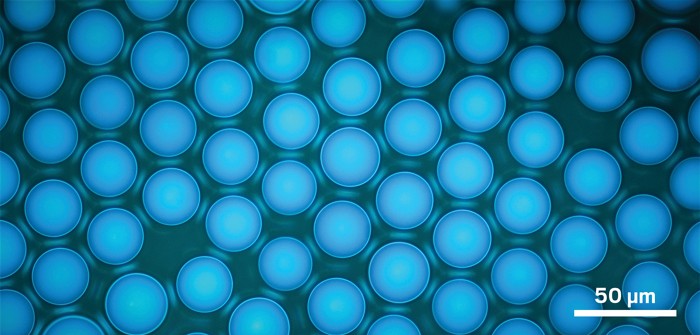Advertisement
Grab your lab coat. Let's get started
Welcome!
Welcome!
Create an account below to get 6 C&EN articles per month, receive newsletters and more - all free.
It seems this is your first time logging in online. Please enter the following information to continue.
As an ACS member you automatically get access to this site. All we need is few more details to create your reading experience.
Not you? Sign in with a different account.
Not you? Sign in with a different account.
ERROR 1
ERROR 1
ERROR 2
ERROR 2
ERROR 2
ERROR 2
ERROR 2
Password and Confirm password must match.
If you have an ACS member number, please enter it here so we can link this account to your membership. (optional)
ERROR 2
ACS values your privacy. By submitting your information, you are gaining access to C&EN and subscribing to our weekly newsletter. We use the information you provide to make your reading experience better, and we will never sell your data to third party members.
Chemical Sensing
Probe binds zinc in antibiotic-resistance enzyme
Fluorescence helps visualize effect of enzyme inhibitors and chelators that could help restore antibiotic function
by Celia Henry Arnaud
June 2, 2021
| A version of this story appeared in
Volume 99, Issue 21

Bacteria constantly evolve new ways to evade antibacterial drugs. One emerging resistance mechanism involves an enzyme called New Delhi metallo-β-lactamase-1 (NDM-1). NDM-1 can hydrolyze most clinically used β-lactam antibiotics, including drugs such as penicillins, cephalosporins, and carbapenems. It requires two zinc atoms to function.
To better understand the role of zinc in the activity of NDM-1, Emily L. Que and Walter Fast of the University of Texas at Austin and coworkers have developed a fluorescent probe that reversibly binds to the zinc in NDM-1 and can help screen for inhibitors of the enzyme that might aid in the fight against antibiotic resistance (J. Am. Chem. Soc. 2021, DOI: 10.1021/jacs.1c00290).
The probe combines a fluorophore and a zinc-binding region. It fluoresces only when it binds to both zinc atoms in the enzyme active site. In the presence of inhibitors that block the active site or chelators that remove zinc, the probe’s fluorescence greatly decreases. Therefore, the probe can be used for screening potential enzyme inhibitors that could prevent the enzyme from degrading antibiotics.
The researchers used the probe with variants of NDM expressed in Escherichia coli. In cultured bacteria, the researchers were able to detect that the clinical variant NDM-15 was more resistant than NDM-1 to chelators that mimic metal-sequestering proteins present in humans’ innate immune system.
“These probes pave the way for screening new inhibitors directly in cells in a way that can also reveal something about how the inhibitor engages with the zinc ions at the active site,” says Katherine J. Franz, an expert on bioinorganic chemistry at Duke University. “There are a lot of important metalloprotein targets out there; this paper provides a template for future endeavors.”



Join the conversation
Contact the reporter
Submit a Letter to the Editor for publication
Engage with us on Twitter